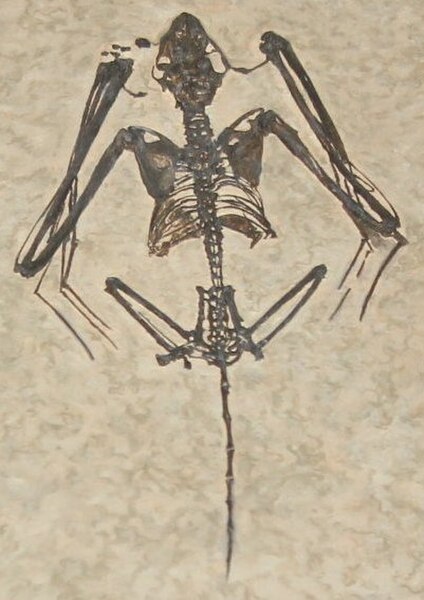Microbats constitute the suborder Microchiroptera within the order Chiroptera (bats). Bats have long been differentiated into Megachiroptera (megabats) and Microchiroptera, based on their size, the use of echolocation by the Microchiroptera and other features; molecular evidence suggests a somewhat different subdivision, as the microbats have been shown to be a paraphyletic group.
Microbat
Ventral view of a Florida Freetail bat (Tadarida cyanocephala) skull, highlighting both the stylohyal and tympanic bones. Specimen from the Pacific Lutheran University Natural History collection.
A series of Romanian postage stamps. The bats depicted are (from top to bottom and left to right): the greater mouse-eared bat, the lesser horseshoe bat, the brown long-eared bat, the common pipistrelle, the greater noctule bat, and the barbastelle, Romanian post miniature sheet, 2003
Bats are flying mammals of the order Chiroptera. With their forelimbs adapted as wings, they are the only mammals capable of true and sustained flight. Bats are more agile in flight than most birds, flying with their very long spread-out digits covered with a thin membrane or patagium. The smallest bat, and arguably the smallest extant mammal, is Kitti's hog-nosed bat, which is 29–34 millimetres in length, 150 mm (6 in) across the wings and 2–2.6 g in mass. The largest bats are the flying foxes, with the giant golden-crowned flying fox reaching a weight of 1.6 kg and having a wingspan of 1.7 m.
Bat
The early Eocene fossil microchiropteran Icaronycteris, from the Green River Formation
Giant golden-crowned flying fox, Acerodon jubatus
"Chiroptera" from Ernst Haeckel's Kunstformen der Natur, 1904







